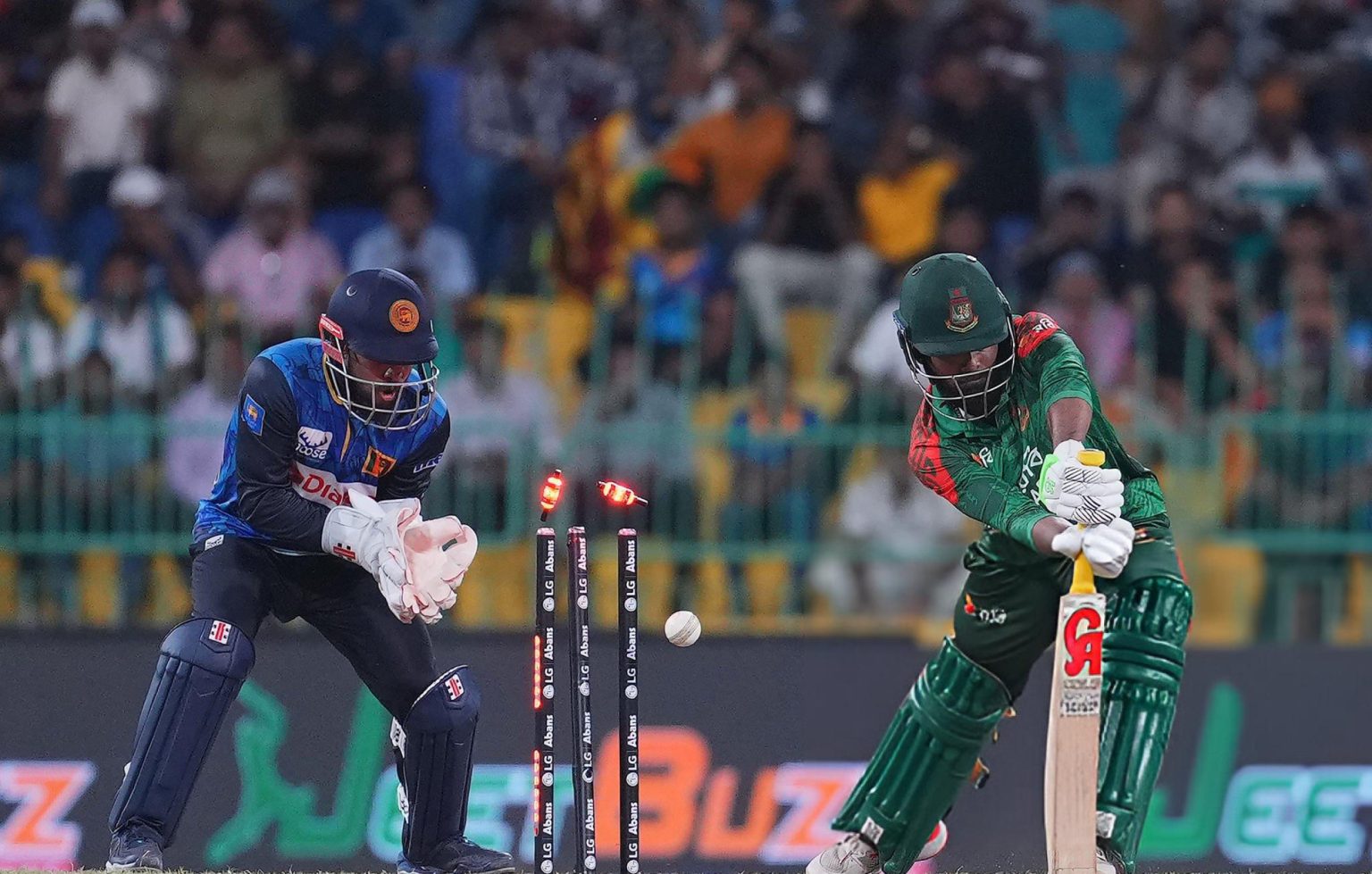The Premadasa Stadium in Colombo holds many memories for Bangladesh. Mahmudullah Riyad’s last-ball six in the Nidahas Trophy is still considered one of the country’s finest T20 moments.
Even the narrow defeat to India in the 2023 Asia Cup didn’t dampen spirits too much. But what unfolded on Wednesday night is something no one will want to remember. In the first ODI of the three-match series against Sri Lanka, Bangladesh lost seven wickets for just five runs in the space of 23 deliveries during their chase. That surreal batting collapse led to a 77-run defeat, and the blame lay squarely with the middle order.
This ODI at Premadasa could have been remembered as a landmark for a new era. For the first time in 20 years, Bangladesh took the field without any of the so-called ‘Panchapandavs’—Shakib Al Hasan, Tamim Iqbal, Mashrafe Bin Mortaza, Mushfiqur Rahim, and Mahmudullah Riyad. But instead, it turned into a heavy defeat. It also made one thing clear: the vacuum left in the middle order by Shakib, Mushfiqur and Mahmudullah isn’t being filled any time soon.
As long as those three played, Bangladesh didn’t have to worry about the middle order. Since the Champions Trophy, Mahmudullah has retired, Mushfiqur now plays only Tests, and although Shakib hasn’t officially retired, he has been out of the ODI setup for a while. In their absence, the team is looking at Liton Das, Towhid Hridoy, and Mehidy Hasan Miraz to fill the gaps. This brand-new middle order, however, failed their first assignment. No one expects them to replace Shakib or Mushfiq overnight, but the manner in which Liton and Hridoy gave away their wickets despite their experience is what’s drawing concern.
Liton, naturally an opener, batted at No. 4 due to team combination. In his previous five innings at that position, he had scored only 81 runs. This time, he returned with a duck. He was trapped LBW by a googly from Wanindu Hasaranga that he completely misread. Though the on-field umpire gave it not out, Sri Lanka reviewed and the decision was overturned. This was Liton’s first ODI since missing the Champions Trophy squad.
Ironically, in that very Champions Trophy, Liton scored a sublime century against India at No. 5. He also batted at that position on debut and has three fifties there. Because of his ability to anchor innings—much like Mushfiq or Mahmudullah—he had been viewed as a long-term solution for the middle order. But the way he got bowled through a big gap between bat and pad by Kamindu Mendis raised serious questions about his basic match awareness.
Captain Miraz didn’t fare much better. He completely failed to read another Hasaranga googly. If he had, he might have tried to move across the crease. Hasaranga is known to bowl at least two googlies every over—it’s not exactly a mystery. In an era of analytics, this is common knowledge. Still, Miraz failed. His full-time ODI captaincy thus began with a duck.
The only exception to this collapse was Zakir Ali Anik. One of the few players seen as indispensable across all three formats, Zakir mounted a lone, futile resistance with the tailenders. His fifty helped Bangladesh reduce the margin of defeat, but also underscored how badly the middle order had failed. With just one wicket in hand, Zakir kept fighting—and if even one of Liton, Miraz or Hridoy had stayed with him, the result might have looked different. To put the collapse in context: Bangladesh lost by 77 runs with 83 balls remaining.
The path laid down by Shakib, Mushfiqur and Mahmudullah will take time for the new middle order to follow. Losing two or three quick wickets may continue to cost matches. No one expects Liton and Hridoy to be carbon copies of their predecessors, but what the team hopes to see is Liton’s composure, Hridoy’s bold strokeplay, and Zakir’s ability to adapt and finish—on a consistent basis.
For now, these few are the best available options. So hope must lie in them.


